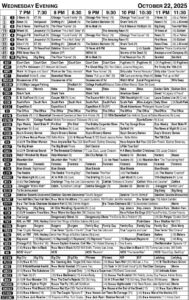Wine 101: Know the jargon and what it means
Every industry has its jargon. In the wine business, to understand some wine words, one- or two-sentence definitions suffice. However, there are some more nuanced words and phrases that take a paragraph, or in other cases, an entire book, to be fully explained. At least for this column, here are a couple terms that can fit into the paragraph category.
MOUTHFEEL
Simply explained, mouthfeel is how the wine feels as it enters the mouth. The sensations a wine can elicit could be sharp, spritzy or soft. They may affect nerve endings on one’s lips and cheeks. Long after a wine is swallowed, sensations may linger. The varied and many components of a wine are the things that collectively go together to create these mouthfeel sensations.
In dry wines, tannin — from the seeds and skins of grapes as they ferment — causes a sense of astringency, much like that which comes from very strong tea. One of the charms of Champagne or sparkling wine (with the exception of some legacy labels, the only wine that can be legally designated as ‘Champagne’ comes from that district in France) are those tiny bubbles. As they pass across the top of the tongue and fill the mouth cavity, they feel almost rough, but then as the carbon dioxide-filled bubbles explode, there is a hint of feeling that reminds one of fireworks on the Fourth of July.
Alcohol provides a feeling of warmth as wines are swallowed. The higher the alcohol concentration, the hotter the sensations in the back of the throat.
Big, complex reds often feel almost heavy on one’s tongue. To some, as they swallow, the richest of these reds remind them of a hand stroking a piece of velvet cloth.
Well-balanced Rieslings offer a pleasant sweet-tart sense. Flinty, grassy Sauvignon Blancs create a somewhat drying yet cool sensation on the tongue. Rich and intense ice wines feel thick and viscous as they are sipped.
Oak-aged Chardonnays often emit buttery sensations on the palate. Very dry wines create a puckering sensation; very sweet ones leave a silky residue.
The definition of mouthfeel — simple, but not so much!
VERTICAL AND VARIETAL TASTINGS
Both vertical and varietal tastings are popular and fun ways to experience wine.
Vertical
In a vertical format, the idea is to collect several vintages of the same wine from the same winemaker. It provides an opportunity to learn a little about how wines age from one year to the next and how Mother Nature will impact the final product differently. Dry seasons often provide additional intensity and more color, especially in our reds. Wet and cold seasons sometimes do not allow the grapes to fully mature, so the vintner might decide to take his normal, dry red Cabernet Franc and produce a semisweet rose. In our Eastern climate, as well as in much of Europe, vintages may vary significantly since our annual growing conditions often swing dramatically. In California, where the climate and seasons are more uniform, while a vintage date can be important, often the nuances of one year to the next are more subtle.
Varietal
On the other hand, a varietal tasting, using the same grape variety, usually from the same vintage and made by a number of winemakers or grown in several different vineyard locations, illustrates different winemaking techniques. Sometimes a Chardonnay will have lots of oak, while other winemakers may produce it exclusively in stainless. Some Rieslings are made in a dryer style, others sweeter; sometimes the idea is to offer ‘fruit up front,’ other times the focus might be a good ‘acid backbone.’
Vineyard locations can make a huge difference in the final product. Some grapes grow in clay soils, others in sandy loam, some in gravely or chalky conditions.
This kind of exercise gives tasters the chance to learn a little about how each vintner handles the same grape stylistically or how growing conditions impact the final product in the bottle.
To talk all things wine, email Donniella at dwinchell@ohiowines.org.

